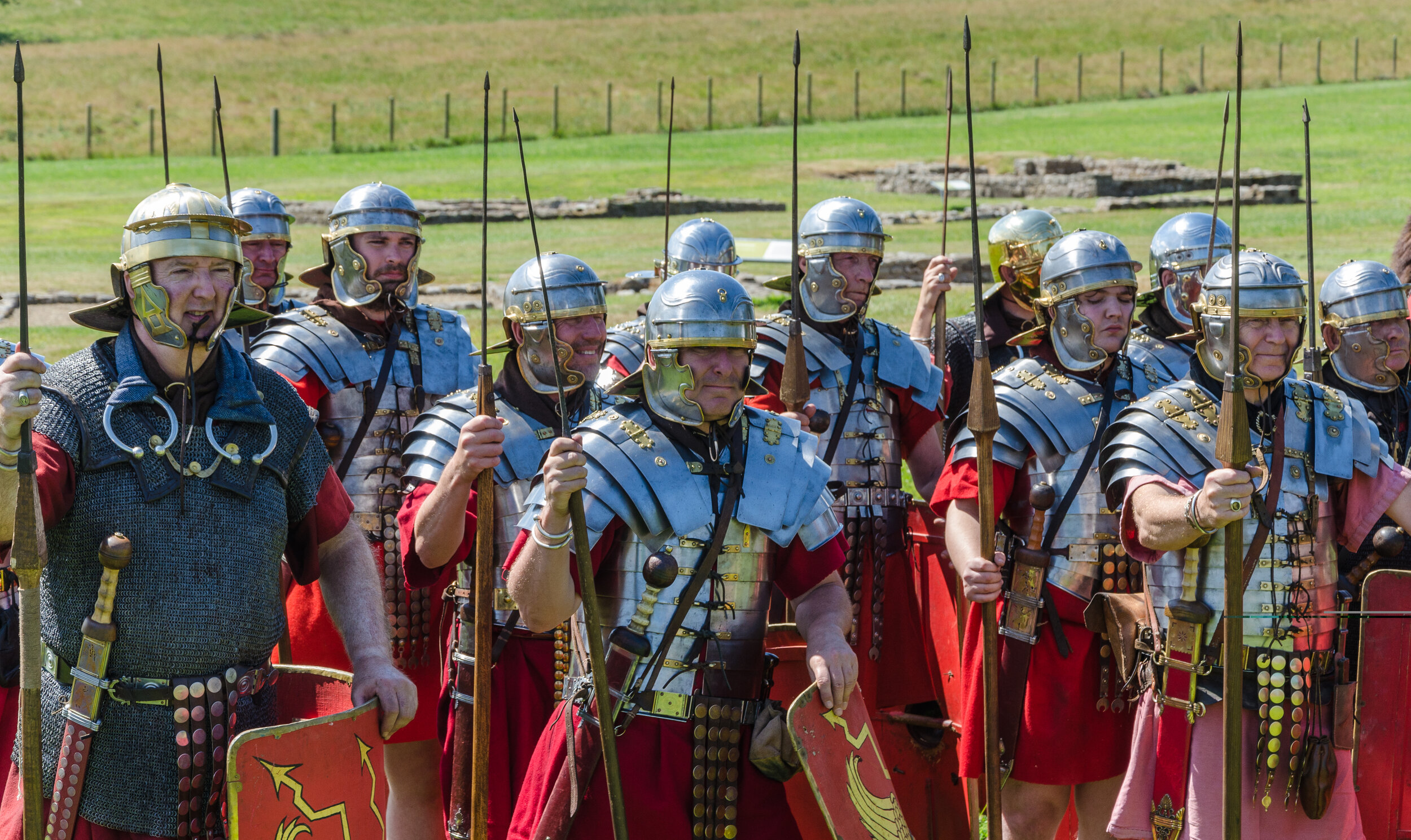THE ROMAN ARMY: Legionary Equipment
The typical Roman helmet is now termed the Imperial Gallic type, made of iron and decorated in bronze. An evolution in design can be traced, although helmets from different periods probably continued in use at the same time.
The coolus helmet was made of bronze but was replaced by iron designs based on Gallic helmets.
A further classification is that of the Imperial Italic helmets, which lack the distinctive Gallic features such as stylised eyebrows.
The armour and equipment of the legionary soldier evolved over centuries of trial and error from the unarmoured militia and Greek style warriors of the early republic to the classic strip type armour of the empire. Later in the empire it became more simplified and basic in its design, as economic difficulties set in.
Roman armour often reflected the best designs of some of their opponents such as the Greeks and Celts. By the early 1st Century AD the standard form of body armour was a mail shirt, made up of thousands of interlocked iron rings. Although early forms of plate armour were worn during the Augustan period with an example recovered from the site of the Varus disaster in Germany where three legions were destroyed in an ambush.
Gradually during this century the more familiar versions of the plate armour (now called lorica segmentata) began to appear. By the time of Trajan, if we are to believe Trajan's column, this was now the uniform of the legions. However, other monuments still depict legionaries wearing mail or scale armour. The soldiers were uniform, in the sense that everyone had a helmet and body armour, but there seems to have been a great deal of mixture in styles and types of armour. Complete examples of plate armour were found at Corbridge on Hadrian's wall, allowing it to be reconstructed.
A large rectangular wooden shield, edged with metal, completed the legionary's protection, and could be used to punch with.
Offensive weapons were the pilum, a javelin with a soft iron shank, the famous gladius or short stabbing sword, and a small dagger called a pugio. The legionary's main weapon was the sword, or gladius. Originally this had a long leaf shape blade, now usually called the Mainz or Fulham type and was worn on two belts along with the pugio. This was gradually replaced by the Pompeii type, named after, examples found in that city. This had a parallel-sided blade, and most scabbards have decoration at the top and the base only. It was usually worn from a baldric, with the pugio on a waist belt.
The pugio, or dagger, is often associated with exquisitely decorated scabbards and there seems to be a lot of individual expression in their design.
Belts were made from metal plates often with enamel designs inlaid, elaborate buckles and mythical scenes including Romulus and Remus. Belts were fitted with an apron made of leather straps decorated with metal which would jangle as tie soldiers marched.
The equipment worn by legionary and other troops in Northern Europe seems to have been designed to protect them against the particular weapons used by their opponents, the Celts and Germans. Their favoured weapon was a long slashing sword, and the Roman armour protected the top half of the soldier's body against the cuts it inflicted. Roman helmets gave good protection to the soldier's head and face, with extra cover from a neck guard. Mail and scale shirts often had a shoulder cape, giving a double thickness of armour just where the sword might strike. The legs were left uncovered so the soldier could move easily, and would be protected by the shield.
The Romans adapted their equipment when they met a new threat. When fighting against the Dacians, who used a long heavy scythe, helmets were given reinforcing bars, greaves were worn on the legs, and the sword arm was protected with armour like that used by gladiators.
The legionary wore a cloak over his armour in bad weather. His tunic was made of wool or linen, and was quite long but was worn hitched up around the waist. Surviving clothing. possibly civilian, shows some of the colours which were used. Whilst working in safe areas the armour could be taken off, and the tunic worn off the shoulder, or knotted behind the neck.
The boots, called caligae, were made of strong leather with up to 80 hobnails in each sole to give a firm grip














